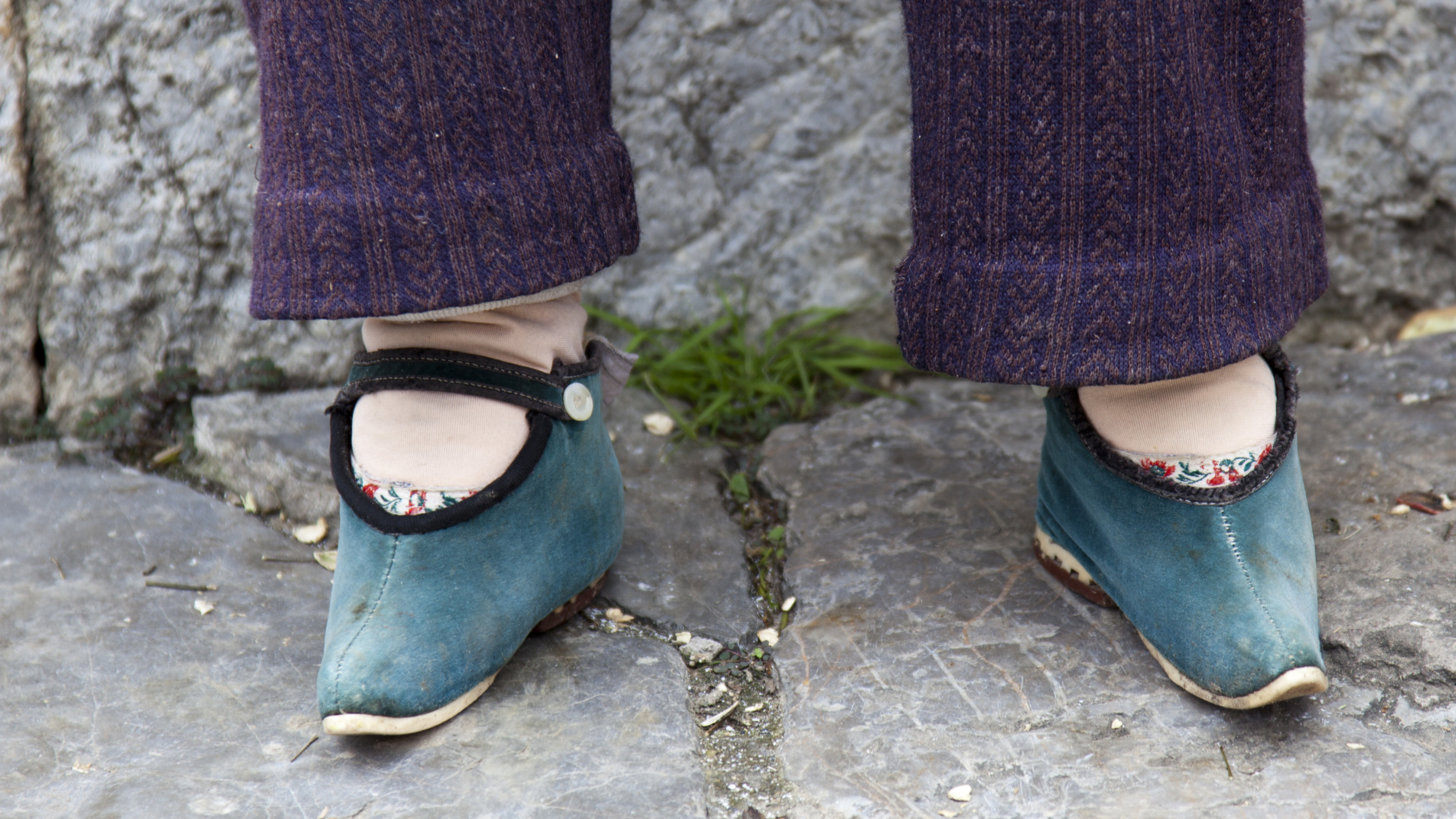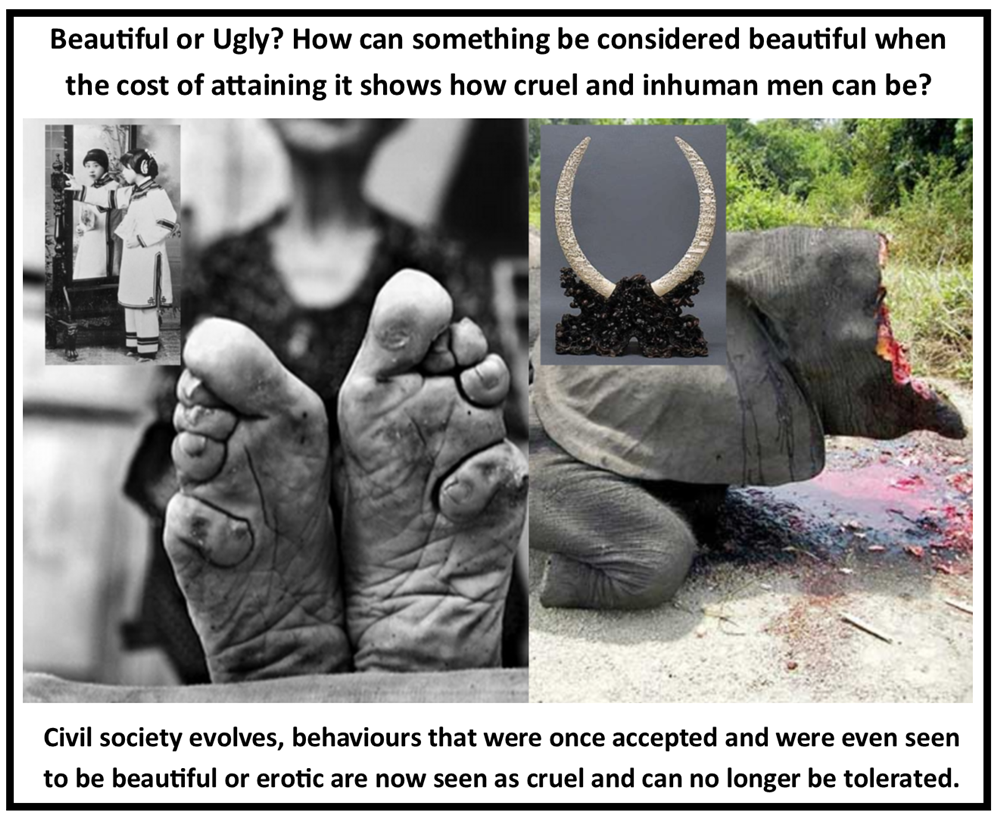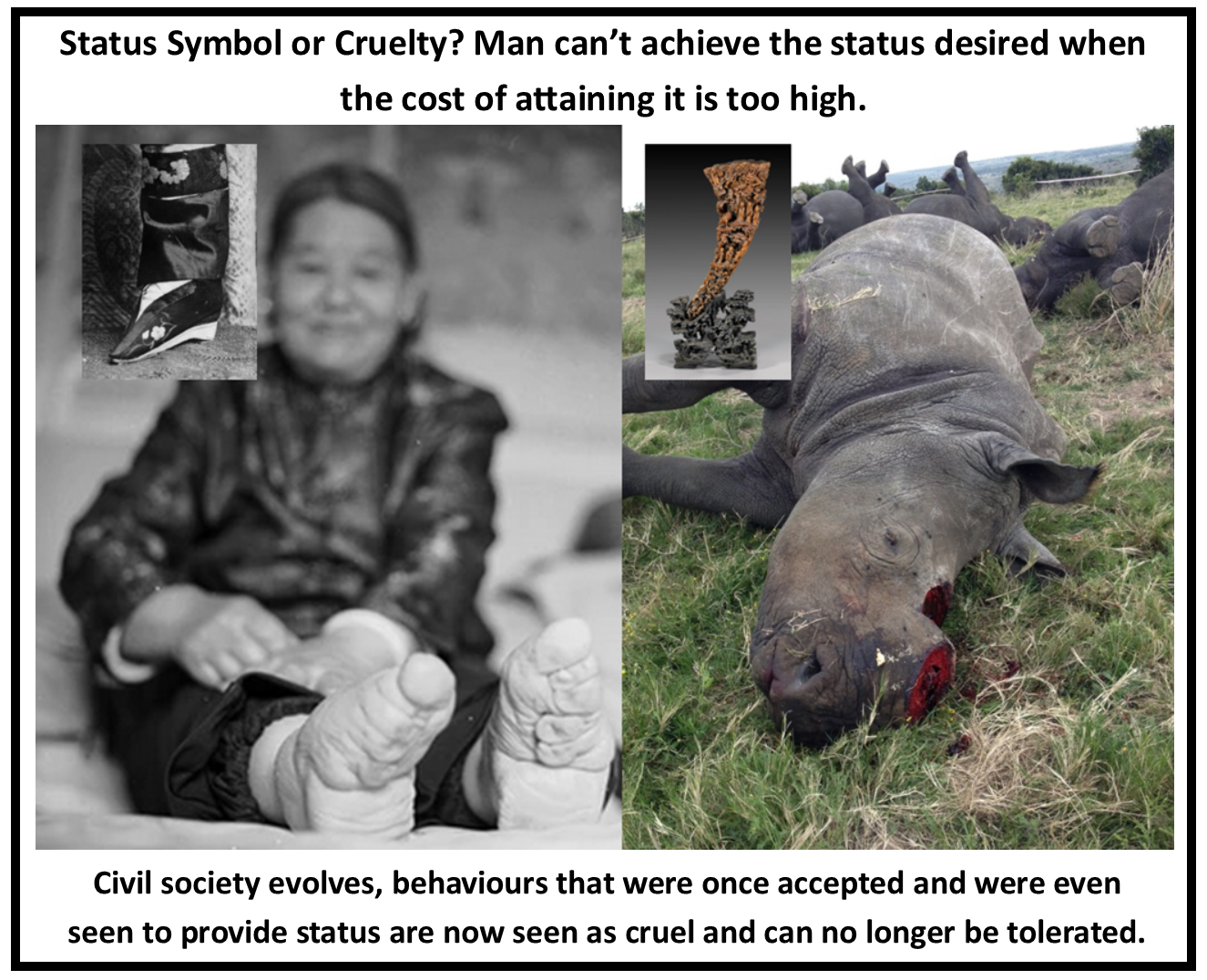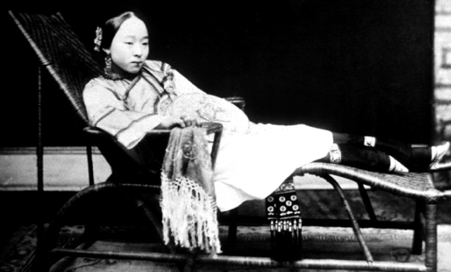
If I was Chinese I would be disgusted that a group of people lobbying to legalise the trade in rhino horn where pushing a message that I was ‘stuck in a cultural mindset’ that would never enable me, my society or my country to evolve or change.
The propaganda this pro-rhino-horn-trade group is pushing seems to say that ‘Because the Chinese and people of SE Asia have used rhino horn in the past then obviously they will ALWAYS use rhino horn because they are incapable of changing, so the only hope for the rhino is to sell rhino horn to them’. All this because the pro-trade people have stockpiled billions of dollars’ worth of rhino horn that they want to sell. They must think that South African citizens and people around the world are naïve enough to believe this rubbish as they lobby for the legalisation of an international or domestic trade in rhino horn.
So just in case you need an example that a society stops tolerating a behaviour that has been practiced for centuries let’s look at Lotus Feet – the practice of foot binding which is thought to have started in the 10th century. Foot binding became popular as a means of displaying status and was also considered as a symbol of beauty in Chinese culture.
Jo Farrell, award-winning photographer and cultural anthropologist, recently tracked down 50 women, all in old age, and photographed them for her book Living History: Bound Feet Women of China. In a recent interview with The Guardian Jo Farrell describes the what these women were put through as children, ‘To create the desirable lotus feet women would have their toes taped together tightly into triangular points. The feet were beaten, cast in herbs and oils to loosen the skin and strapped into lotus shoes. Most women were bound at the age of seven. “The first year is particularly excruciating because the girls were made to walk until their toes would break under their weight,”.
Lotus feet caused a number of health issues; the most common problem being infection. To reduce the chance of infection, toenails were often removed. Bindings also lead to reduced circulation to the toes and in some cases infections would cause rotting flesh.
Foot binding was outlawed in China 103 years ago, following almost 10 centuries of the practice; one of the concerns being that foot binding may have been seen as a symbol of China’s backwardness. So it is insulting for the pro-rhino-horn-trade group to say the people of China and SE Asia can’t change their behaviour.
From a Breaking The Brand prospective how can the insights from the change in desire for lotus feet be used to the change in desire for rhino horn and ivory. The messages could be:


All societies and cultures evolve based on what behaviours are rewarded, what behaviours are punished and mainly what behaviours are tolerated. In many countries around the world homosexuality went from being punished, to tolerated and then to the celebration of same sex marriage within a couple of generations.
Even though China and some other Asian societies once felt that lotus feet conveyed status or beauty, they evolved to reach a point where it was accepted that the cost was too high – too backward thinking, too inhuman. We are now at the same point where it is clear that cost of assigning status to rhino horn, ivory and many other wildlife ‘commodities’ is too high and can no longer be tolerated.
It is both appalling and ridiculous that a handful of individuals, whose sole focus is personal gain, are trying to besmirch the people of China and SE Asia, saying that they can’t change their historic behaviour, as a way to push for a legalised trade in rhino horn.
If we applied the same ‘people can’t change’ principle to other countries then:
- South Africa would still have an Apartheid Government, Nelson Mandela would have died in jail and there would be no ‘born free’ generations.
- Instead of the Australian Government officially apologising to the ‘stolen generation’, children would still be being taken from Aboriginal communities.
People, cultures and societies change all the time and this change can often be rapid. Such changes could be accelerated if more expertise and funds were directed at developing comprehensive behaviour change/demand reduction strategies for rhino horn, ivory, pangolin etc
Some fledgling work has been done and the necessary process for behaviour change has started, but the tactics used by the pro-trade lobby are at best undermining demand reduction efforts; at worst sabotaging them.
These are the views of the author: Dr. Lynn Johnson, Founder, Breaking the Brand





